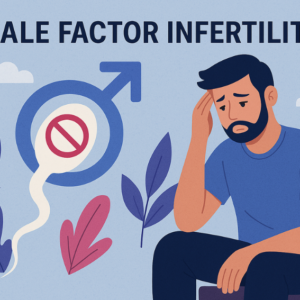One of the types of cancer is called ovarian cancer and it starts in the ovaries where the female reproductive organs produce eggs and hormones such as estrogen and progesterone. It ranks number five as the killer of women cancerous death and is commonly termed the silent killer because of its silent signs and symptoms which might make early detection hard.

It is stated by the American Cancer Society that each year about 19,880 new cases of ovarian cancer reported in the United States, and the numbers of deaths are about 12,810.
This article offers a detailed knowledge of the main facts of ovarian cancer such as symptoms, the definition of the diagnosis, means of treatment of the disease and prevention and early diagnosis of it.
What is Ovarian Cancer?
The development of ovarian cancer occurs when the body has abnormal cells in the ovaries or surrounding body parts, like the fallopian tubes, which develops uncontrollably, forming a tumor.
Without treatment, the cancer may spread (metastasize) to other parts of the body e.g. abdomen, pelvis, and distant organs. Ovarian cancer can be of many varieties and the classification of the cancer is done depending on the cells in which the cancer actually begins:
- Epithelial Ovarian Cancer: It is the most predominant one affecting approximately 85-90 percent. It begins at the cells which line the ovaries or fallopian tubes.
- Germ Cell Tumors: Rare, they develop in the egg-forming cells, and present higher occurrence in younger ladies.
- Stromal Tumors: This type is very rare and starts in hormone production connective tissue.
- Primary Peritoneal Cancer: This is another cancerous condition related to epithelial ovarian cancer as it is also originated and formed in peritoneum, which is the abdominal cavity lining, but is similar to epithelial ovarian cancer since it acts the same way as the latter.
The differences between their characteristics, methods of treatment, and prognoses apply to each type separately; epithelial ovarian cancer is most aggressive and dominant.
Symptoms of Ovarian Cancer
To be able to detect the signs of ovarian cancer, you need to know what is normal to your body. New persistent and abnormal symptoms can be of a concern, in particular, when they last longer than several weeks. Common signs and symptoms of ovarian cancer include:
- Persistent bloating or abdominal swelling: This is the swelling not occasional one that is experienced after a meal but constantly there.
- Pelvic or lower abdominal pain: You should not disregard cramping or ache in the lower abdomen, in particular, when it is not connected with your menstrual period.
- Loss of appetite or feeling full quickly: When you are always full after consuming a little quantity of food, this should be a red warning.
- Increased need to urinate: Urinary frequency or strong urge to urinate, without signs of an infection of a urinary tract, may also be signs of pressure by an enlarging tumor.
- Changes in bowel habits: Ovarian changes may be sometimes related with constipation, diarrhea, or alternating patterns.
- Unusual fatigue or lower back pain: Chronic fatigue and pain in the back could be indicators of internal problems when other sources of the problems have been eliminated.
- Abnormal vaginal bleeding or discharge: A healthcare provider should consider any bleeding especially in postmenopausal women.
The symptoms could be quite low-keyed and can be blamed to be related to stomach problems, stress or just ageing. Nonetheless, in case they continue more than a few weeks or become worse, it is of the utmost importance to evaluate them medically.
Early identification has a positive significant outcome, and ninety percent of the cases are identified at an early and later stages between (III or IV) when cancer has spread outside of the ovaries, and recognizing the symptoms at an early stage is crucial.
Risk Factors
The identification of the risk factors of ovarian cancer can assist in establishing the group that is prone to the condition and allow taking precautionary measures. Although nobody is exactly sure what causes ovarian cancer, some factors result in the development of ovarian cancer:
- Age: Women aged 50 years or more are most likely to be affected, with more likely to get it at the age of 60 or above.
- Family History and Genetics: Family preexisting history of ovarian, breast, or colorectal cancer poses a danger especially when due to familial mutation of genes such as BRCA1 or BRCA2. Other women who have the mutations face a lifetime risk of up to 40 percent of getting an ovarian cancer compared to 1-2 percent amongst all the women.
- Reproductive History: They have never been pregnant or had early menstruation or late menopause-Women in this category are at an increased risk by a small amount.
- Hormone Replacement Therapy (HRT): Estrogen-only Hormone Replacement Therapy over 15 years and particularly during post-menopausal years may be a risk factor.
- Obesity: There is a slightly increased risk with a larger body mass index (BMI).
- Endometriosis: The uterine tissue proliferated out of the organ but referred to as endometriosis is associated with increasing chances of developing some forms of ovarian cancer.
- Lifestyle Factors: Smoking and high fat diet may also help to increase the risk but evidence is not conclusive.
On the other hand, use of oral contraceptives, pregnancy, breastfeeding and tubal ligation could be protective against developing ovarian cancer.
Diagnosis of Ovarian Cancer
The ovarian cancer is diagnosed through a combination of clinical assessment, image and laboratory testing. It usually starts with the visits at the clinic by the woman complaining of chronic symptoms or during regular pelvic examinations. The most important diagnostic measures are:
- Pelvic Examination: Physical examination to test abnormality of mass or fluid retention in the belly.
- Imaging Tests:
- Transvaginal Ultrasound (TVUS): Performed using sound waves to help visualize the ovaries and check their abnormalities like cysts and masses.
- Computed Tomography (CT) Scan: This is used to give exact pictures of the abdomen and pelvis to evaluate the spreading of cancer.
- Magnetic Resonance Imaging (MRI): It can be employed to take a more detailed imaging under special circumstances.
- Blood Tests:
- CA-125 Test: Documents the proportions of the CA-125 protein, which is regardless of everything elevated with ovarian cancer, albeit it can likewise be elevated in non-cancerous ailments, such as endometriosis.
- Other Biomarkers: Tests for HE4 or OVA1 may be used to assess the likelihood of malignancy.
- Biopsy or Surgery: A positive diagnosis needs a tissue sample, which is obtained usually during surgery. To put this to test, one can undertake a laparoscopy or laparotomy to excise a suspicious junk to be studied by the pathologist.
- Genetic Testing: Family history and testing genetic mutation and or other genetic syndromes (e.g., Lynch syndrome) may be provided to guide treatment, and determine the family risk.
There is the staging that entails the spread of the cancer and is usually carried out during surgery. There are four stages of ovarian cancer:
- Stage I: Cancer is confined to one or both ovaries.
- Stage II: The pelvis is infected with cancer.
- Stage III: The abdomen or the lymph nodes have been infected with cancer.
- Stage IV: Cancer has spread to other body parts other than the ones closest to the cancer, i.e.: liver or lungs.
The correct staging plays a very essential role in the treatment and prognosis prediction.
Treatment Options
The care of ovarian cancer is related to the stage of the cancer, its type and the general health of a patient. The most used are surgery, chemotherapy and radiation or targeted therapies.
Surgery:
- Debulking Surgery: In this therapy, it aims at excusing the maximum amount of the tumor. This can be performed as a complete hysterectomy (removal of the uterus), bilateral salpingo-oophorectomy (elimination of the two ovaries together with the fallopian tubes), or omentectomy (removal of the fatty tissue in the abdomen).
- In the case of cancer at an early stage, surgery might not need to be extensive to save fertility among young women.
- There is also the aspect of surgery that assists in staging the cancer and in mapping further treatment.
Chemotherapy:
- Neoadjuvant Chemotherapy: It is given prior to surgery in order to reduce tumors, usually in cases with advanced stages.
- Adjuvant Chemotherapy: This is administered post-surgery as a way of getting rid of remaining cancerous cells. Carboplatin and paclitaxel are common medications that are normally administrated intravenously 3-4 weeks apart and 3-6 times.
- Intraperitoneal Chemotherapy: The drugs are injected directly into the abdomen (in the advanced cases) but this method has more side effects.
Targeted Therapies:
- PARP Inhibitors: Drugs such as olaparib and niraparib destroy cancer cells with BRCA defects and are typically administered as maintenance therapy to prevent the cancer reoccurrence.
- Anti-Angiogenesis Drugs: Bevacizumab prevents the development of blood vessels new growths in tumors and it slows down the progression of cancer.
- Immunotherapy: They are sort of investigational and are aimed at enhancing the capacity of the immune system in combating cancer.
Radiation Therapy: This is hardly used with ovarian cancer, but can be used in special incidences e.g. to manage symptoms in advanced cases.
Clinical Trials: The patients can become the subjects of experiments, especially on the recurrent and/or resistant cancers. The trials are conducted to test new therapies to enhance the effects.
Therapy is very individual, and usually a multidisciplinary team. We usually work in groups of gynecologic oncology; we have medical oncology, and we have radiation oncology. The side effects, or chemotherapies that include nausea, fatigue, and loss of hair, is handled through additional care, as well as anti-nausea drugs and nutritional advice.
Prognosis and Survival Rates
The prognosis for ovarian cancer varies by stage at diagnosis:
- Stage I: 5-year survival rate is approximately 90%.
- Stage II: 70-80%.
- Stage III: 30-50%.
- Stage IV: Less than 20%.
Detection at an early stage is all important because it is more difficult to cure the cancers at their advanced stages. Recurrence is frequent, especially at stages III and IV, so it is necessary to monitor it constantly through CA-125 examination, imaging, and physical examination. Other variables affecting it include; tumor type, age of patient, and his/her response to treatment.
Prevention and Early Detection
The knowledge is a great weapon. Knowing what to expect and recognizing changes in your body will allow you to act in a way timely enough. Although there is no way you can avoid getting ovarian cancer, there are measures which can lower the risk:
- Oral Contraceptives: This method can have a 50% reduction in risk through long term use (more than 5 years).
- Prophylactic Surgery: Prophylactic surgery is the operative removal of the fallopian tubes and ovaries after childbearing, optionally performed by women with high-risk genetic mutations, such as BRCA1 and BRCA2.
- Healthy Lifestyle: Risk can be reduced by maintaining an ideal weight, good nutrition, not smoking.
No screening test of ovarian cancer is reliable in a general population. But women at risk of having a strong family history or due to genetic makeup, it would help to perform regular pelvic examination, CA-125 tests and transvaginal ultrasound, but not foolproof. Symptom awareness and early medical assessment should be conducted to detect early.
Living with Ovarian Cancer
Being diagnosed with ovarian cancer may be physically and emotionally difficult. Patients can be helped by:
- Support Groups: Finding a connection with other people in an organization, such as the Ovarian Cancer Research Alliance.
- Counseling: Avoiding the panic, depression or having fears about the recurrence through the means of mental health specialists.
- Palliative Care: For advanced cases, focusing on symptom relief and quality of life.
- Follow-Up Care: The follow-up of checking a recurrence which will be conducted regularly, normally after every 3-6 months, during the first years of the disease.
Advances in Research
Current investigations are helping to better the ovarian cancer. Major ones are:
- Immunotherapy: Discovering check point inhibitors and vaccines as a means of boosting a response of the immune system.
- Precision Medicine: The creation of therapies to address a tumor on a genetic level.
- Early Detection Tools: Exploring Searches into blood-based biomarkers and Imaging modalities to improve screening.
- Combination Therapies: The new drug combination is in testing in order to surmount resistance in recurrent cancers.
Clinical trials play a vital role in furthering such initiatives with patients being advised to communicate trial opportunities with their health personnel.
Conclusion
Ovarian cancer is still a very strong form of cancer because its symptoms were very subtle and can easily be diagnosed late. Nevertheless, with the development of modern diagnostic methods, surgical equipment, and specific therapy, the situation is changing positively, more people survive and live better. It is imperative to have an understanding of predisposing factors, beware of the symptoms and get checked early.
Genetic counseling and preventive approaches are lifesaving in the event of people with a high level of risk. Through continued investigations and an increment in awareness, the prognosis of ovarian cancer patients is getting better and there is a hope of improved results in the future.






